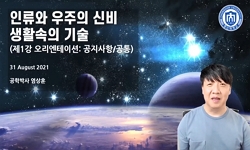이 논문은 디지털 시대, 인공지능(생성형 AI)이 생활 깊숙이 자리한 환경에서 대학생들의 자기표현과 글쓰기에 대한 문제 제기에서 출발한다. 제 4차 산업혁명 시대는 팬데믹 상황과 맞닥뜨...
http://chineseinput.net/에서 pinyin(병음)방식으로 중국어를 변환할 수 있습니다.
변환된 중국어를 복사하여 사용하시면 됩니다.
- 中文 을 입력하시려면 zhongwen을 입력하시고 space를누르시면됩니다.
- 北京 을 입력하시려면 beijing을 입력하시고 space를 누르시면 됩니다.

디지털 시대, 대학생들의 자기표현(Self-Expression)과 글쓰기 - 융합형 인간, 더불어 살아가는 인간으로서 ‘개인의 이미지 리터러시’를 중심으로 = Self-Expression and Writing of College Students in the Digital Age - Focused on ‘Personal Image Literacy’ as Integrated Individuals Living Together
한글로보기https://www.riss.kr/link?id=A109639807
-
저자
임은경 (충남대학교)
- 발행기관
- 학술지명
- 권호사항
-
발행연도
2025
-
작성언어
Korean
-
주제어
humanity ; authenticity ; emotional writing ; convergent human (Homo Convergence) ; human living together (Homo Symbious) ; self-exploration ; self-discovery and understanding ; self-reflection ; personal growth ; self-identity ; personal image literacy ; 인간다움 ; 나다움 ; 정서적 글쓰기 ; 융합형 인간(호모 컨버전스) ; 더불어 사는 인간(호모 심비우스) ; 자기탐색 ; 자기발견과 이해 ; 자아성찰 ; 자기성장 ; 자기 정체성 ; 개인의 이미지 리터러시
-
등재정보
KCI등재
-
자료형태
학술저널
- 발행기관 URL
-
수록면
201-241(41쪽)
- DOI식별코드
- 제공처
-
0
상세조회 -
0
다운로드
부가정보
국문 초록 (Abstract)
제 4차 산업혁명 시대, 각 분야의 여러 전문가들은 인공지능과 사람이 협력해야 하는 시대라고 입을 모은다. 그러나 인간과 인공지능이 협력해야 한다면, 기초 글쓰기를 가르치는 교수자는 생성형 AI가 공존하는 상황에서 어떠한 글쓰기 교육을 제시해야 하는지, 글쓰기 교육의 나아갈 방향을 문제 제기하지 않을 수 없다. 현재 대학 초년생들에게 글쓰기를 지도하는 목적은 학술적 글쓰기와 실용적 글쓰기 교육을 목적으로 한다. 하지만, 그보다 더 중요한 것은 ‘나’와 ‘나’의 관계, ‘나’와 ‘너’의 관계, ‘나’와 ‘우리’의 관계, ‘나’와 ‘타자(AI)’와 관계 맺는 방법으로써, 정서적 글쓰기 함양 또한 매우 중요한 가치를 지닌다. 왜냐하면, ‘나’와 ‘나’의 관계와 더불어 ‘나’와 다른 다양한 ‘타자’와 어떻게 관계 맺고 살아가느냐에 따라 삶의 질이 확연하게 다르기 때문이다. 따라서 나와 다른 여러 타자와 관계를 원활하게 하기 위해서는 먼저, 본립도생(本立道生), 즉 ‘기본을 바로 세워야 나아갈 길이 생긴다'는 의미를 다시금 고찰해야 한다. 이것은 팬데믹 이후, 인간으로서 가장 본질적인 ‘나’, ‘존재의 고유성’에 초점을 맞추고, ‘나’와 ‘나’의 관계가 바로 설 때, ‘나’와 ‘타자’의 관계 또한 바로 설 수 있기 때문이다.
존재가 바로 선다는 의미는 자신을 객관적으로 이해할 수 있고, 어떤 일이든 중심을 갖고 주체적으로 행할 수 있다는 것을 뜻한다. 그러면 학습은 물론, 취업의 관문에서 조차 어렵지 않게 헤쳐 나아갈 수 있다. 결국 ‘나’를 아는 사람은 무엇을 원하는지 알기 때문에 자신의 행로를 선택할 수 있고, 그것을 위해 노력할 수 있기 때문에 끝내 자신이 원하는 바를 이룰 수 있는 것이다. 따라서 이 논문에서는 디지털 시대와 무학과 시대, 호모 컨버전스(Homo Convergence)와 호모 심비우스(Homo Symbious), 즉 융합형 인간과 더불어 사는 인간으로서, 개인의 이미지 리터러시(Personal Image Literacy)에 대한 이해를 목적으로 한다. 이와 더불어 시학적/수사학적 메커니즘의 정서적 글쓰기를 통해 대학생들의 자기표현을 적절하게 표출하고, 내재되어 있는 ‘인간다움’과 ‘나다움’을 이해한 후, 인공지능과 협력해야 한다는 데 본고의 목적이 있다.
이 논문은 디지털 시대, 인공지능(생성형 AI)이 생활 깊숙이 자리한 환경에서 대학생들의 자기표현과 글쓰기에 대한 문제 제기에서 출발한다. 제 4차 산업혁명 시대는 팬데믹 상황과 맞닥뜨리면서 나와 나의 관계, 나와 타인의 관계는 물론, 인공지능(생성형 AI)과 관계 등 의사소통 측면에서 생태계의 변화를 맞고 있다. 이러한 패러다임의 전환기에 대학생들의 자기 표현적 글쓰기는 더없이 중요해지고 있다. 생성형 AI의 출현은 글쓰기를 가르치는 교수자와 배우는 학생들에게 매우 혼돈의 지점에 놓이게 한다. 왜냐하면, 언어의 사실성과 진실성의 문제, 저작권법과 개인정보 보호 문제, 정치적으로 악용될 수 있는 문제, 딥페이크 문제, 편견과 왜곡을 생성하는 가짜뉴스 문제 등 생성형 AI의 순기능보다 역기능이 제기되기 때문이다.
제 4차 산업혁명 시대, 각 분야의 여러 전문가들은 인공지능과 사람이 협력해야 하는 시대라고 입을 모은다. 그러나 인간과 인공지능이 협력해야 한다면, 기초 글쓰기를 가르치는 교수자는 생성형 AI가 공존하는 상황에서 어떠한 글쓰기 교육을 제시해야 하는지, 글쓰기 교육의 나아갈 방향을 문제 제기하지 않을 수 없다. 현재 대학 초년생들에게 글쓰기를 지도하는 목적은 학술적 글쓰기와 실용적 글쓰기 교육을 목적으로 한다. 하지만, 그보다 더 중요한 것은 ‘나’와 ‘나’의 관계, ‘나’와 ‘너’의 관계, ‘나’와 ‘우리’의 관계, ‘나’와 ‘타자(AI)’와 관계 맺는 방법으로써, 정서적 글쓰기 함양 또한 매우 중요한 가치를 지닌다. 왜냐하면, ‘나’와 ‘나’의 관계와 더불어 ‘나’와 다른 다양한 ‘타자’와 어떻게 관계 맺고 살아가느냐에 따라 삶의 질이 확연하게 다르기 때문이다. 따라서 나와 다른 여러 타자와 관계를 원활하게 하기 위해서는 먼저, 본립도생(本立道生), 즉 ‘기본을 바로 세워야 나아갈 길이 생긴다'는 의미를 다시금 고찰해야 한다. 이것은 팬데믹 이후, 인간으로서 가장 본질적인 ‘나’, ‘존재의 고유성’에 초점을 맞추고, ‘나’와 ‘나’의 관계가 바로 설 때, ‘나’와 ‘타자’의 관계 또한 바로 설 수 있기 때문이다.
존재가 바로 선다는 의미는 자신을 객관적으로 이해할 수 있고, 어떤 일이든 중심을 갖고 주체적으로 행할 수 있다는 것을 뜻한다. 그러면 학습은 물론, 취업의 관문에서 조차 어렵지 않게 헤쳐 나아갈 수 있다. 결국 ‘나’를 아는 사람은 무엇을 원하는지 알기 때문에 자신의 행로를 선택할 수 있고, 그것을 위해 노력할 수 있기 때문에 끝내 자신이 원하는 바를 이룰 수 있는 것이다. 따라서 이 논문에서는 디지털 시대와 무학과 시대, 호모 컨버전스(Homo Convergence)와 호모 심비우스(Homo Symbious), 즉 융합형 인간과 더불어 사는 인간으로서, 개인의 이미지 리터러시(Personal Image Literacy)에 대한 이해를 목적으로 한다. 이와 더불어 시학적/수사학적 메커니즘의 정서적 글쓰기를 통해 대학생들의 자기표현을 적절하게 표출하고, 내재되어 있는 ‘인간다움’과 ‘나다움’을 이해한 후, 인공지능과 협력해야 한다는 데 본고의 목적이 있다.
다국어 초록 (Multilingual Abstract)
In this context, the education of expressive writing for university students has become more crucial than ever. The emergence of generative artificial intelligence (AI) has placed both instructors teaching <Fundamental Writing> and the students learning it at a point of significant confusion. This is because the potential drawbacks of generative AI are increasingly highlighted over its benefits, including issues related to the factuality and authenticity of language, copyright and data privacy concerns, potential political misuse, deepfake-related challenges, and the generation of bias and distortion.
In the era of the Fourth Industrial Revolution, experts across various fields unanimously emphasize the need for collaboration between humans and artificial intelligence. However, if such collaboration is to become a reality, instructors teaching <Fundamental Writing> must critically address what kind of writing education should be offered in a context where generative AI coexists with human learners, and they cannot avoid questioning the future direction of writing education. Currently, the primary aim of teaching writing to first-year university students is to foster both academic and practical writing skills.
However, even more important than academic or practical writing is fostering emotional writing as a means to explore relationships—between "self" and "self," "self" and "others," "self" and "us," and "self" and the other, including AI. Emotional writing holds significant value because the quality of one’s life varies considerably depending on how effectively one relates to oneself and to diverse "others." Therefore, it is crucial to contemplate the principle of Bonlipdosaeng (本立道生), which suggests that establishing a solid foundation is essential for charting a clear path forward.
This also implies the need to reflect on the fundamental aspects of ‘humanity’ and ‘authenticity’ as a human especially in the post-pandemic era. It underscores the idea that only by establishing a firm sense of the ‘self’ can one gain the strength to move forward toward the world. Therefore, by focusing on the ‘uniqueness of existence’ and ensuring that the relationship between ‘self’ and ‘self’ is firmly established, it becomes possible to build meaningful and balanced relationships with the other as well.
The notion of establishing oneself signifies the ability to understand oneself objectively. This self-awareness enables individuals to navigate not only the learning process but also the challenges of career pursuits with greater ease. Ultimately, those who understand themselves are aware of what they desire, can make informed choices about their paths, and work diligently to achieve their goals, thereby realizing their aspirations.
Accordingly, this paper aims to explore the concept of personal image literacy in the context of the digital age and the era of interdisciplinary learning, as well as within the frameworks of Homo Convergence (the convergent human) and Homo Symbious (the coexisting human). The study focuses on facilitating emotional writing grounded in poetic and rhetorical mechanisms to help university students express themselves effectively. Furthermore, it seeks to foster an understanding of inherent ‘humanity’ and ‘authenticity’ before emphasizing the necessity of collaboration with artificial intelli...
This study explores the issues related to self-expression and university writing in the era of digital age where artificial intelligence(generative AI) has become deeply into everyday life. University students who are positioned in the era of the Four...
This study explores the issues related to self-expression and university writing in the era of digital age where artificial intelligence(generative AI) has become deeply into everyday life. University students who are positioned in the era of the Fourth Industrial Revolution which is a period marked by paradigm shifts have encountered significant ecological changes changes in communication not only in their relationships with themselves and others but also in their interactions with artificial intelligence (generative AI), particularly in the context of the COVID-19 pandemic.
In this context, the education of expressive writing for university students has become more crucial than ever. The emergence of generative artificial intelligence (AI) has placed both instructors teaching <Fundamental Writing> and the students learning it at a point of significant confusion. This is because the potential drawbacks of generative AI are increasingly highlighted over its benefits, including issues related to the factuality and authenticity of language, copyright and data privacy concerns, potential political misuse, deepfake-related challenges, and the generation of bias and distortion.
In the era of the Fourth Industrial Revolution, experts across various fields unanimously emphasize the need for collaboration between humans and artificial intelligence. However, if such collaboration is to become a reality, instructors teaching <Fundamental Writing> must critically address what kind of writing education should be offered in a context where generative AI coexists with human learners, and they cannot avoid questioning the future direction of writing education. Currently, the primary aim of teaching writing to first-year university students is to foster both academic and practical writing skills.
However, even more important than academic or practical writing is fostering emotional writing as a means to explore relationships—between "self" and "self," "self" and "others," "self" and "us," and "self" and the other, including AI. Emotional writing holds significant value because the quality of one’s life varies considerably depending on how effectively one relates to oneself and to diverse "others." Therefore, it is crucial to contemplate the principle of Bonlipdosaeng (本立道生), which suggests that establishing a solid foundation is essential for charting a clear path forward.
This also implies the need to reflect on the fundamental aspects of ‘humanity’ and ‘authenticity’ as a human especially in the post-pandemic era. It underscores the idea that only by establishing a firm sense of the ‘self’ can one gain the strength to move forward toward the world. Therefore, by focusing on the ‘uniqueness of existence’ and ensuring that the relationship between ‘self’ and ‘self’ is firmly established, it becomes possible to build meaningful and balanced relationships with the other as well.
The notion of establishing oneself signifies the ability to understand oneself objectively. This self-awareness enables individuals to navigate not only the learning process but also the challenges of career pursuits with greater ease. Ultimately, those who understand themselves are aware of what they desire, can make informed choices about their paths, and work diligently to achieve their goals, thereby realizing their aspirations.
Accordingly, this paper aims to explore the concept of personal image literacy in the context of the digital age and the era of interdisciplinary learning, as well as within the frameworks of Homo Convergence (the convergent human) and Homo Symbious (the coexisting human). The study focuses on facilitating emotional writing grounded in poetic and rhetorical mechanisms to help university students express themselves effectively. Furthermore, it seeks to foster an understanding of inherent ‘humanity’ and ‘authenticity’ before emphasizing the necessity of collaboration with artificial intelli...
동일학술지(권/호) 다른 논문
-
- 어문연구학회
- 신성철
- 2025
- KCI등재
-
연관어 네트워크 분석을 통한 현대구전설화의 남녀 화자별 이야기 지형 연구 - 『증편 한국구비문학대계』를 대상으로
- 어문연구학회
- 한유진
- 2025
- KCI등재
-
노성 파평윤씨(魯城 坡平尹氏) 종회에서의 종회시 기능과 의미
- 어문연구학회
- 이송희
- 2025
- KCI등재
-
한국어 교재의 구어적 특성 반영에 대한 고찰 - 한국어교육의 이상과 현실 사이에서
- 어문연구학회
- 이기영
- 2025
- KCI등재




 KCI
KCI 스콜라
스콜라






